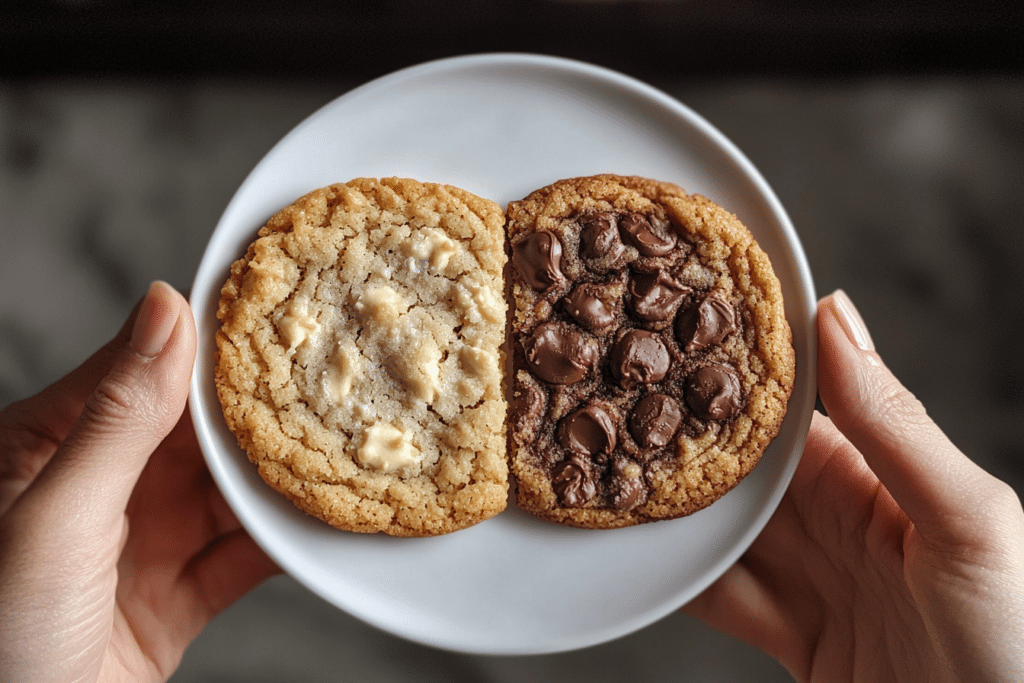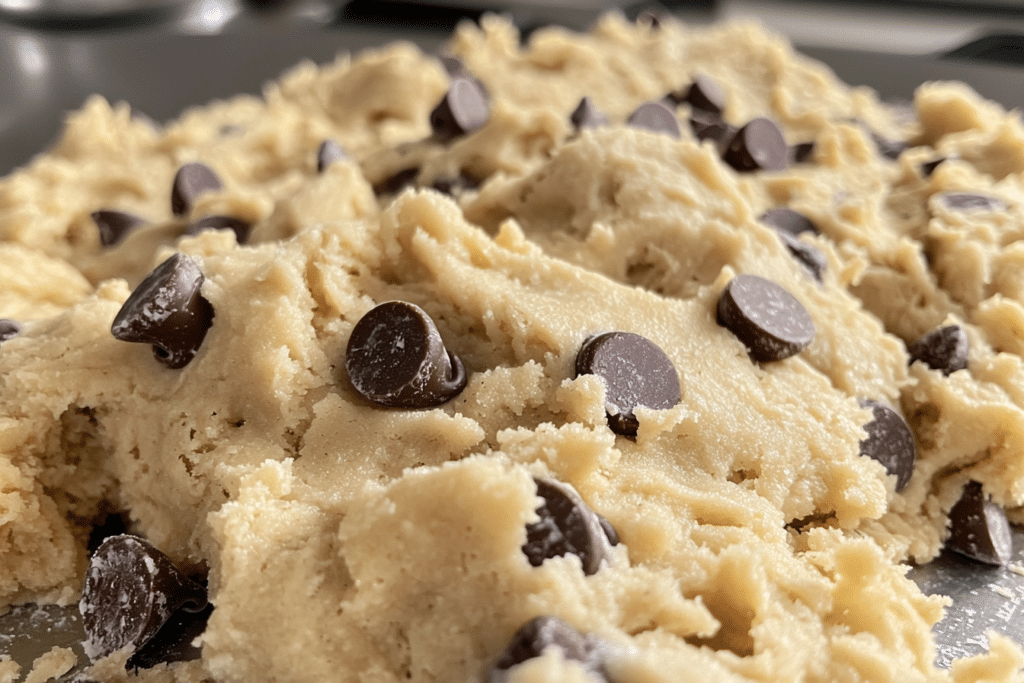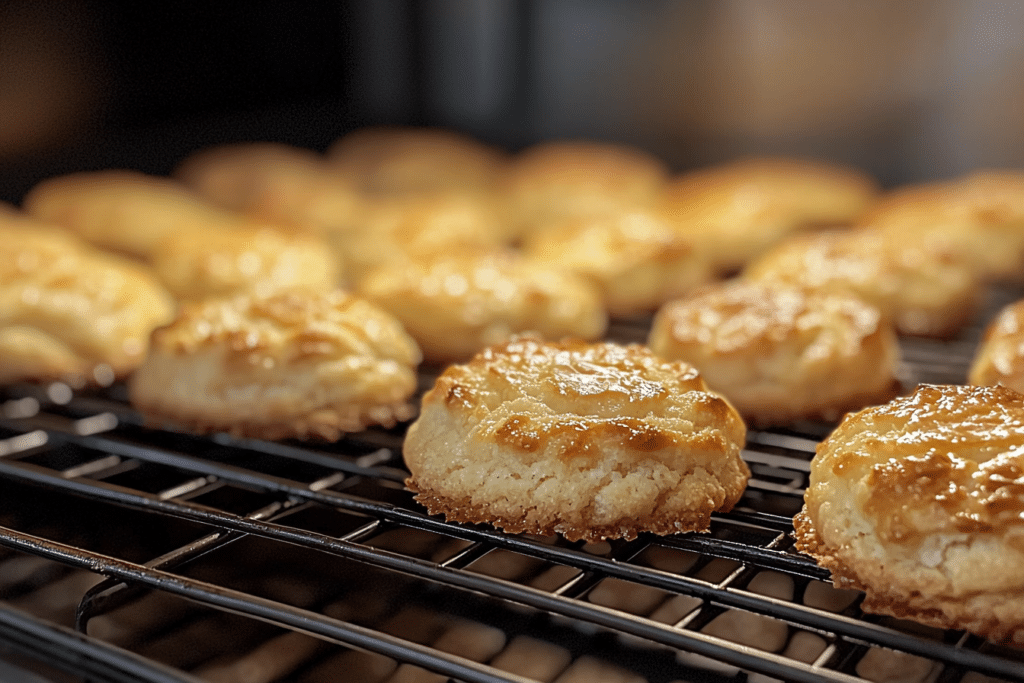1. Introduction
Cookies are one of the world’s favorite baked treats, but preferences can vary significantly. While some people love crispy cookies with a satisfying crunch, others crave soft, chewy cookies that melt in the mouth. Achieving the perfect chewy texture can be challenging, especially if your cookies often turn out crunchy instead.
The key to chewy cookies lies in understanding how ingredients and techniques interact. This guide will explore the science behind cookie textures, offer tips for adjusting ingredients, and address common mistakes. By the end, you’ll have all the tools you need to make your cookies chewy every time.
2. The Science of Cookie Textures

Achieving chewy cookies instead of crunchy ones is all about understanding the science behind how ingredients and techniques interact. Baking is as much about precision as it is about creativity, and even small tweaks can have a big impact on your cookies’ texture. Understanding the science of how ingredients and techniques interact is key to achieving your ideal cookie texture. Learn more about the science of cookie baking.
2.1 Role of Ingredients in Texture
1. Butter vs. Oil:
- Butter adds richness and spreads more during baking, leading to cookies with softer centers.
- Oil, being 100% fat, creates denser cookies but lacks the flavor-enhancing properties of butter. For chewier cookies, butter is usually the best choice.
2. Sugar Ratios:
- Brown sugar contains molasses, which adds moisture and chewiness to cookies.
- Granulated sugar, on the other hand, promotes crispness. A higher ratio of brown sugar to granulated sugar is ideal for chewy cookies.
3. Eggs:
- Eggs add moisture and act as a binding agent, which contributes to the chewiness.
- Using an extra egg yolk can make cookies richer and softer, while reducing egg whites minimizes dryness.
4. Flour:
- High-protein flours, such as bread flour, can make cookies chewier due to their higher gluten content.
- All-purpose flour works well for balanced cookies but can lean toward crispiness if overused.
2.2 The Impact of Baking Techniques
1. Baking Time and Temperature:
- Baking cookies at a slightly lower temperature for a shorter time helps retain moisture, which is essential for chewy textures.
- Aim to remove cookies from the oven when the edges are set, but the centers are still soft.
2. Chilling Dough:
- Refrigerating the dough for at least 30 minutes prevents spreading and enhances flavor.
- Chilled dough also produces thicker, chewier cookies by allowing the fat to solidify before baking.
3. Mixing Methods:
- Overmixing develops gluten, leading to tougher cookies. Mix ingredients just until combined to maintain a tender texture.
The interaction of ingredients and techniques is at the heart of creating cookies that are chewy instead of crunchy. Understanding these principles sets the foundation for adjusting recipes to suit your preferences.
3. Adjusting Ingredients for Chewy Cookies
Creating chewy cookies instead of crunchy ones often requires small but deliberate adjustments to the ingredients. Each tweak contributes to the texture, ensuring your cookies have the perfect balance of softness and chewiness. For additional tips on achieving soft and chewy cookies, visit our guide to soft chewy cookies.
3.1 Choosing the Right Fats
Butter:
- Butter is the best fat for chewy cookies due to its moisture content.
- Use unsalted butter to control the saltiness of the dough.
Shortening:
- A mix of butter and shortening can enhance chewiness while maintaining the rich flavor of butter.
- Shortening has a higher melting point, which helps cookies hold their shape and retain moisture.
Pro Tip: Avoid margarine or low-fat spreads, as they contain water, which can lead to inconsistencies in texture.
3.2 Increasing Moisture Content
Moisture is key to achieving chewy cookies. Here’s how to add it:
- Extra Egg Yolks: Egg yolks are high in fat, adding richness and softness to the dough. Use an additional yolk for chewier cookies.
- Milk or Cream: Adding a tablespoon of milk or cream to the dough increases moisture, resulting in a softer texture.
Pro Tip: Be careful not to overdo it, as too much liquid can make the dough too sticky and difficult to handle.
3.3 Using Brown Sugar and Honey
Brown Sugar:
- Brown sugar plays a pivotal role in making cookies soft and chewy. Explore this guide to sugar types in baking to better understand their effects.
- Replace at least 50% of the granulated sugar with brown sugar for a richer texture.
Honey:
- A teaspoon of honey not only enhances flavor but also acts as a humectant, retaining moisture in the dough.
3.4 Adding Cornstarch or Cream of Tartar
Cornstarch:
- Cornstarch tenderizes the dough and creates a melt-in-your-mouth texture. Add 1–2 teaspoons to your dry ingredients.
Cream of Tartar:
- Cream of tartar lowers the pH of the dough, preventing overbrowning and ensuring a soft texture. Use sparingly—about 1/4 teaspoon per batch.
Adjusting these ingredients gives you control over the texture of your cookies, helping you consistently achieve the chewy results you’re looking for. Combining these techniques will transform your cookie game from good to great.
4. Baking Techniques for Chewy Cookies
Even with the right ingredients, baking techniques can make or break the texture of your cookies. These methods will help ensure your cookies are soft and chewy rather than crunchy. Learn how specific ingredients contribute to chewy cookies with our breakdown of ingredients in Nestle cookie dough.
4.1 Chilling the Dough
Chilling dough is one of the most effective ways to achieve chewy cookies. Here’s why it works:

- Prevents Spreading: Refrigerating solidifies the fat, ensuring cookies don’t spread too much during baking.
- Enhances Flavor: Chilling allows flavors to meld, creating a deeper and more complex taste.
How to Chill Dough:
- Wrap the dough tightly in plastic wrap or store it in an airtight container.
- Refrigerate for at least 30 minutes, but for best results, chill overnight.
Pro Tip: If you’re short on time, freeze the dough for 15–20 minutes instead of refrigerating.
4.2 Underbaking
Removing cookies from the oven slightly underbaked ensures a soft center that remains chewy after cooling.
- How to Spot the Perfect Bake:
- Edges should be set and slightly golden.
- Centers should appear slightly undercooked but will firm up as they cool.
- Avoid Overbaking: Even 1–2 extra minutes in the oven can result in crunchy cookies.
4.3 Parchment Paper vs. Greased Pans
The baking surface affects how heat is distributed, influencing cookie texture:
- Parchment Paper: Provides even heat distribution, which is ideal for chewy cookies. It also prevents cookies from sticking to the pan.
- Greased Pans: Creates crispier edges, so avoid greasing if you want a softer texture.
Pro Tip: A silicone baking mat works similarly to parchment paper but is reusable and eco-friendly.
These baking techniques, when combined with the right ingredients, ensure consistent results and chewy cookies every time. With practice, these methods become second nature, taking your baking to the next level.
5. Customizing Cookie Recipes for Chewiness
Customizing cookie recipes allows you to experiment with flavors and textures while maintaining that perfect chewy consistency. From creative mix-ins to unique flavor enhancements, there are countless ways to make your cookies stand out.
5.1 Adding Mix-ins
Adding mix-ins not only elevates flavor but also adds to the chewy texture when chosen carefully:
- Chocolate Variations: Use chunks, chips, or even shaved chocolate for melty pockets of flavor.
- Nuts: Add crunch and contrast with chopped walnuts, pecans, or almonds.
- Dried Fruits: Try raisins, cranberries, or chopped apricots for a chewy and fruity twist.
- Coconut Flakes: Unsweetened coconut flakes provide a unique chewiness and flavor.
Pro Tip: Keep mix-ins to about 1 cup per batch to avoid overpowering the dough.
5.2 Flavor Enhancements
Incorporating additional flavors can make your cookies more exciting while complementing their chewiness:
- Vanilla Extract: Use high-quality vanilla for a warm, aromatic flavor.
- Spices: Add a pinch of cinnamon, nutmeg, or cardamom for a warm and complex flavor profile.
- Espresso Powder: A teaspoon of espresso powder enhances chocolate flavors without making the cookies taste like coffee.
Quick Tip: Add citrus zest (like orange or lemon) to brighten the flavor without altering the texture.
5.3 Creating Themed Cookies
Transform your chewy cookies into festive treats for any occasion:
- Shapes and Colors: Use food coloring or cookie cutters to customize the appearance.
- Toppings: Sprinkle with decorative sugar, edible glitter, or crushed candy canes.
- Stuffed Cookies: Fill with marshmallows, Nutella, or caramel for a gooey center.
Pro Tip: Themed cookies are perfect for parties, holidays, or personalized gifts.
Customizing cookie recipes is a fun way to experiment while ensuring the soft and chewy texture remains intact. With the right mix-ins, flavors, and presentation, your cookies can become a true crowd-pleaser.
6. Common Mistakes and How to Fix Them
Even experienced bakers can run into issues when trying to make cookies chewy instead of crunchy. Recognizing and addressing common mistakes ensures consistent success, To understand why cookies sometimes spread too much or flatten, check out this article on flat Nestle cookies. To troubleshoot baking mistakes and ensure perfect chewy cookies, check out these tips for soft and chewy cookies.
6.1 Overmixing Dough
The Problem:
Overmixing develops too much gluten in the flour, resulting in tougher, less chewy cookies.
How to Fix:
- Mix wet and dry ingredients just until combined.
- Avoid overworking the dough, especially after adding the flour.
Pro Tip: Use a wooden spoon or a stand mixer on low speed to prevent overmixing.
6.2 Using Incorrect Flour Ratios
The Problem:
Too much flour leads to dense, dry cookies, while too little flour causes excessive spreading.
How to Fix:
- Measure flour using the spoon-and-level method to avoid packing too much into the measuring cup.
- For chewier cookies, use bread flour or a mix of bread and all-purpose flour for higher gluten content.
Quick Tip: If the dough feels too dry, add 1–2 teaspoons of milk to improve consistency.
6.3 Misjudging Baking Time
The Problem:
Overbaking results in cookies that are crunchy rather than chewy.

How to Fix:
- Set a timer to avoid overbaking.
- Remove cookies from the oven when the edges are set but the centers appear slightly underbaked.
Pro Tip: Rotate the baking sheet halfway through baking to ensure even cooking.
By addressing these common mistakes, you’ll improve your cookie-baking skills and achieve the soft, chewy texture you’re aiming for every time. Troubleshooting these issues will make a noticeable difference in your results.
7. FAQs About Making Chewy Cookies
To improve readability, I’ve added subheadings to the FAQ section. Each question now has its own subheading.
7.1 What Makes Cookies Chewy Instead of Crunchy?
Cookies become chewy when they have higher moisture content and are baked for a shorter time. Using ingredients like brown sugar, butter, and extra egg yolks contributes to chewiness, while chilling the dough helps maintain a soft texture.
7.2 Can I Make Chewy Cookies Without Brown Sugar?
Yes, but brown sugar plays a significant role in adding moisture. If you don’t have brown sugar, you can substitute with granulated sugar and a small amount of molasses or honey to mimic its effects.
7.3 How Does Chilling Dough Make Cookies Chewier?
Chilling solidifies the fat in the dough, reducing spreading during baking. This creates thicker cookies with softer centers, enhancing chewiness.
7.4 Can I Fix Crunchy Cookies to Make Them Softer?
While you can’t fully reverse the texture, storing crunchy cookies with a slice of bread or apple in an airtight container can add some moisture back. For a quick fix, microwave cookies for 5–10 seconds before serving.
7.5 Are Chewy Cookies Healthier Than Crunchy Ones?
Nutritionally, the difference is negligible. However, chewy cookies may contain slightly more moisture and fat due to ingredients like brown sugar or additional yolks.
7.6 Does Altitude Affect Cookie Chewiness?
Yes, at high altitudes, reduced air pressure can cause cookies to spread more and lose moisture. Adjust by adding extra flour, reducing sugar slightly, and lowering the baking temperature.
7.7 How Long Do Chewy Cookies Stay Fresh?
Stored in an airtight container, chewy cookies stay fresh for up to one week. Freezing them extends their shelf life to three months.
7.8 Can I Make Chewy Cookies Vegan?
Yes, by replacing butter with plant-based alternatives and eggs with flaxseed meal mixed with water or applesauce, you can make vegan chewy cookies. Ensure your other ingredients, like chocolate chips, are also vegan.
7.9 Why Are My Cookies Flat and Not Chewy?
Flat cookies result from excessive butter, insufficient flour, or dough that wasn’t chilled. Ensure your measurements are accurate and chill the dough before baking.
7.10 Should I Use Baking Powder or Baking Soda for Chewy Cookies?
Baking soda is typically better for chewy cookies as it reacts with acidic ingredients like brown sugar to enhance softness. Baking powder is more suited for cakier textures.
8. Conclusion
Chewy cookies are a treat that’s loved for their soft, moist texture and rich flavors. Whether you’re a seasoned baker or a beginner, achieving the perfect chewy texture is entirely possible with the right balance of ingredients and techniques.
From using brown sugar and butter to chilling your dough and underbaking slightly, the journey to chewy perfection lies in understanding how each component interacts. Adjusting your recipes and avoiding common mistakes will make a significant difference, turning ordinary cookies into extraordinary ones.
Remember, baking is as much about experimenting as it is about following recipes. Don’t be afraid to try new mix-ins, flavors, and methods until you find what works best for you. With these tips and insights, you’re well on your way to mastering the art of making cookies chewy instead of crunchy.
Final Thought: Whether for family gatherings or an indulgent treat, chewy cookies are a guaranteed crowd-pleaser. Now it’s time to grab your ingredients and start baking!
